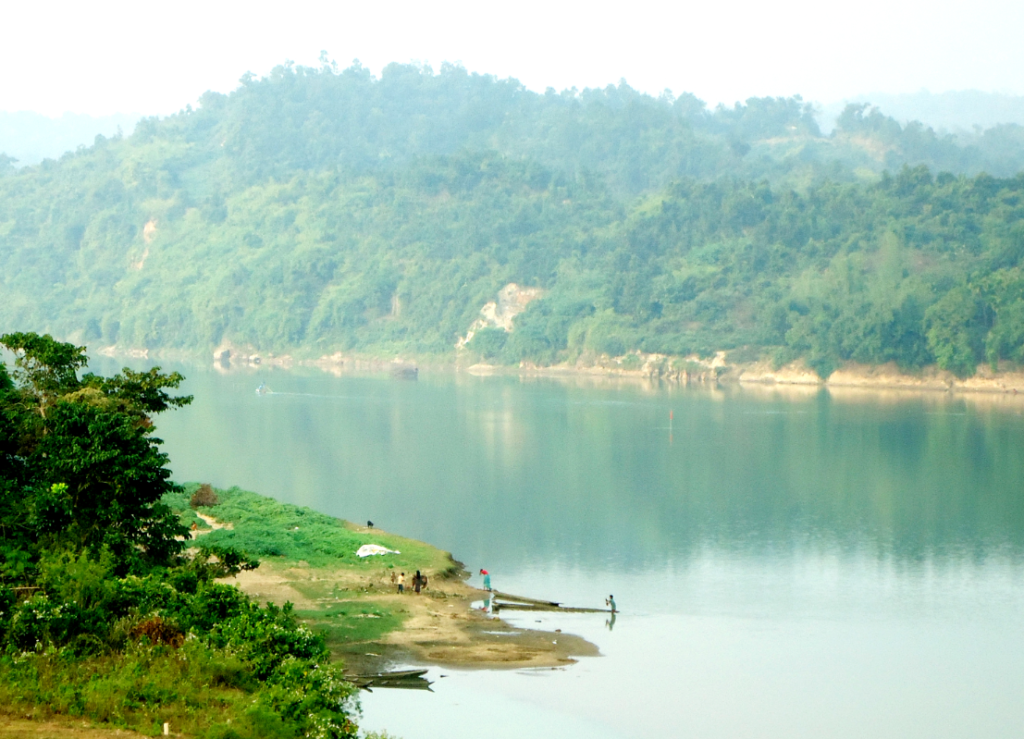Nestled in the northeastern region of Bangladesh, Netrokona bursts with natural beauty, vibrant culture, and rural charm. From serene haors (wetlands) and winding rivers to diverse ethnic communities and historic landmarks, Netrokona offers unforgettable experiences for travelers and adventurers. Moreover, as the gateway to the pristine Garo Hills and a center of agricultural and cultural richness, it invites anyone eager to explore the unexplored.
Geography and Natural Splendor
Netrokona lies in the Mymensingh Division, bordered to the north by India’s Garo Hills of Meghalaya. Vast wetlands, rivers, and hills define its landscape, creating a haven for nature lovers. In particular, major rivers such as the Kangsha, Someshwari, and Dhanu nourish the district’s lush greenery and fertile lands.
Natural Attractions in Netrokona
- Haors and Wetlands: Netrokona is renowned for its haors, including the famous Khaliajuri Haor. These wetlands transform into a vast expanse of water during the monsoon season, creating a mesmerizing landscape perfect for boating and bird-watching.

Someshwari River
- Birishiri and Someshwari River: The village of Birishiri, located near the Someshwari River, is one of Netrokona’s top attractions. Known for its vibrant blue waters and surrounding white clay hills, Birishiri offers a breathtaking view that draws nature enthusiasts and photographers alike.
- Garo Hills: The northern part of Netrokona is home to the picturesque Garo Hills, which provide a serene retreat with their rolling landscapes, lush forests, and rich biodiversity.

Durgapur Clay Hills
- Durgapur Clay Hills: Located in Durgapur Upazila, these hills are famous for their unique topography and colorful clay deposits, offering a striking contrast to the surrounding greenery.
Cultural Richness
Netrokona’s cultural heritage is deeply rooted in its diverse communities. The district is home to both Bengali and indigenous Garo (Mandi) populations, whose traditions and festivals add to the region’s cultural vibrancy.
Key Cultural Highlights:
- Folk Music: The district is famous for its traditional Baul and Bhatiali music, reflecting the lives and emotions of the rural communities.
- Indigenous Culture: The Garo community celebrates Wangala, a harvest festival, with traditional dances, songs, and rituals.
- Handicrafts: Local artisans produce exquisite bamboo crafts, textiles, and pottery that showcase the district’s artistic talent.
Historical and Religious Landmarks
Netrokona boasts several historical and religious sites that attract visitors from across the country:
- Bijoypur Clay Mines: Known for their high-quality white clay, these mines are not only economically significant but also a unique geological attraction.
- Durgapur Mandir Complex: A collection of ancient temples that stand as a testament to the region’s historical significance.
- Gauripur Zamindar Bari: This heritage site reflects the opulence and architectural beauty of Bengal’s zamindari era.
Netrokona Administrative Divisions
Netrokona is divided into ten upazilas , each offering distinct experiences and attractions:
- Netrokona Sadar: The administrative hub of the district, it features several cultural institutions and urban amenities.
- Durgapur: Famous for the Someshwari River, Birishiri, and Durgapur Clay Hills, this upazila is a top tourist destination.
- Khaliajuri: Known for its expansive haors, this upazila offers a tranquil escape amidst nature.
- Purbadhala: Renowned for its fertile lands and vibrant rural life, Purbadhala showcases the district’s agricultural richness.
- Kalmakanda: Bordering the Garo Hills, this upazila is a gateway to the pristine landscapes of northern Netrokona.
- Madan: Home to the breathtaking Gobindasree Temple, a significant religious and historical site.
- Mohanganj: A scenic area with a mix of wetlands and traditional villages, perfect for eco-tourism.
- Barhatta: Known for its serene rural landscapes and vibrant cultural traditions.
- Atpara: A peaceful upazila with lush greenery and small rivers weaving through its lands.
- Dharmapasha: Although partly in Sunamganj, its haor regions are shared with Netrokona, enhancing its natural allure.
Economy and Livelihood
Agriculture is the backbone of Netrokona’s economy, with rice, jute, and vegetables as the main crops. Additionally, the haors offer a rich source of fish, contributing significantly to local diets and incomes. Handicrafts and cottage industries also play a vital role, preserving traditional craftsmanship while providing employment opportunities.
Tourism in Netrokona: A Growing Industry
Netrokona’s untapped natural beauty and cultural richness make it an emerging destination for eco-tourism and cultural tourism. Thanks to its warm hospitality, visitors often leave with unforgettable memories. Popular activities include boating on the haors, exploring clay hills, trekking through the Garo Hills, and experiencing vibrant local festivals.
How to Reach Netrokona
Netrokona is well-connected to major cities in Bangladesh:
- By Road: Regular bus services run from Dhaka and other nearby cities to Netrokona.
- By Train: Train services from Dhaka to Mohanganj or Netrokona Sadar provide a scenic and comfortable journey.
- By Air: The nearest airport is in Mymensingh, from where visitors can take local transport to Netrokona.
Best Time to Visit
The ideal time to visit Netrokona is between November and March, when the weather is pleasant. During this period, the haors are particularly scenic and accessible.
Final Thoughts
Netrokona, with its unspoiled natural beauty and rich cultural diversity, promises a memorable journey. Whether you’re exploring the azure waters of the Someshwari River, trekking through the Garo Hills, or immersing yourself in vibrant traditions, Netrokona invites you to experience the true heart of Bangladesh. For those seeking tranquility, adventure, or cultural enrichment, this hidden gem welcomes you with open arms and endless possibilities.



